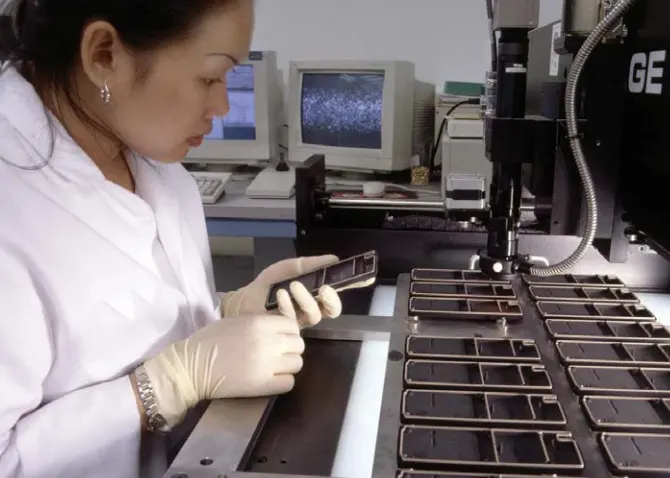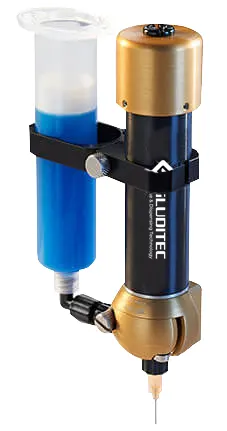EMI Adhesive Dispensing System
Electrically Conductive EMI Adhesive
EMI, also known as RFI in the RF range, permeates our contemporary environment, emanating from virtually any electronic device and transmitted through both transmission lines and radiation from its source. Major sources of EMI include power lines, automobile ignitions, switching power supplies, and microprocessors. This phenomenon is ubiquitous in our modern world.
What are EMI or Electrically conductive adhesives?
EMI Adhesives with electrical conductivity are made by blending resins with electrically conductive particles to reduce their resistance to carrying current.
Although epoxies are commonly used, there are also silicone and other options. These adhesives can be filled with various conductive particles such as silver, iron, carbon, and graphite.
What are the problems when dispensing EMI Electrically Conductive Adhesive?
Electrical Particles

Conductive materials often contain particles like metal powders, carbon, or other conductive fillers. These particles can agglomerate or settle, leading to uneven dispensing and potential clogging of dispensing equipment.
Abrasive Nature

This abrasiveness can result in wear and tear on dispensing nozzles and equipment, reducing their lifespan and requiring frequent maintenance.
Precision Requirements

Some applications, such as electronics manufacturing, demand high precision in the dispensing process. Ensuring accurate and repeatable dispensing of electrically conductive materials is crucial for meeting these precision requirements.


How can we support you?
If you need any assistance, do not hesitate to contact us


